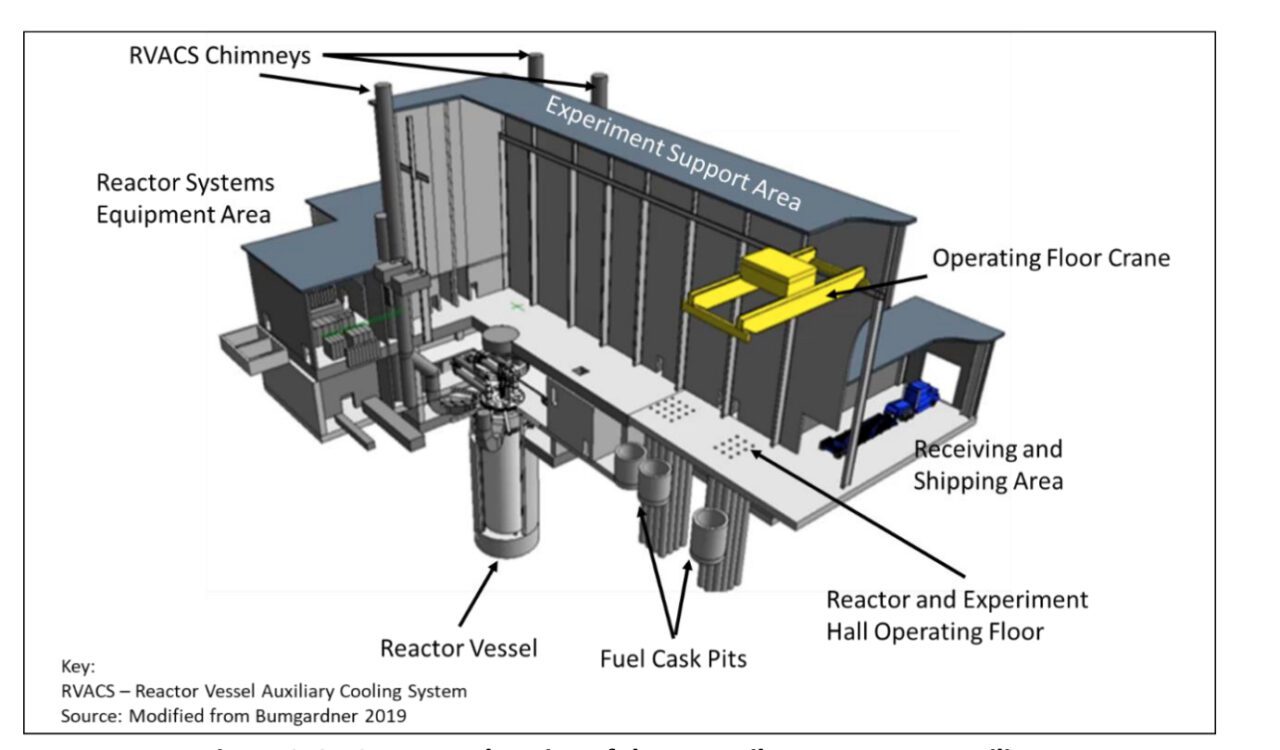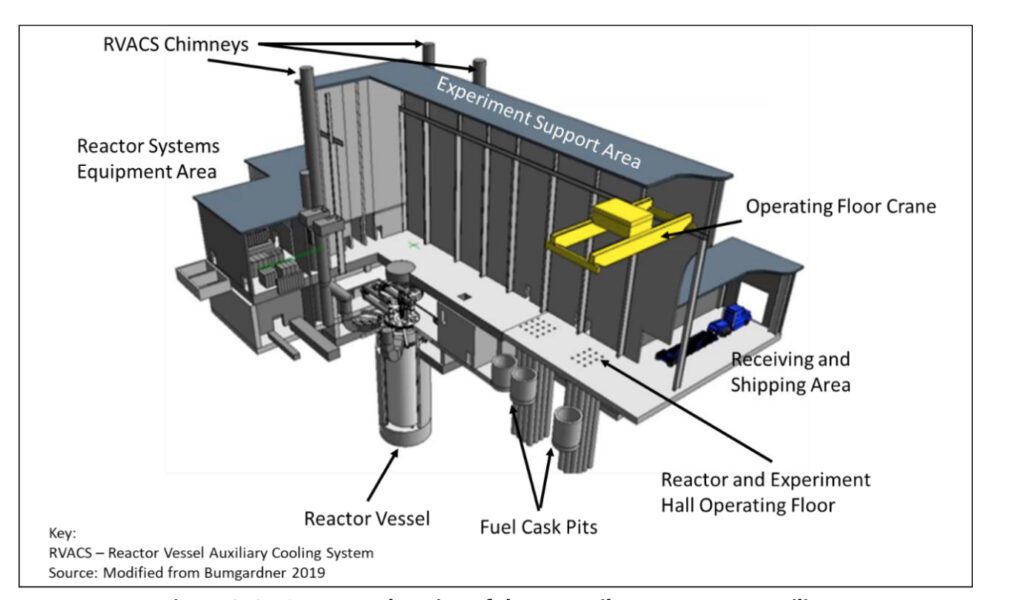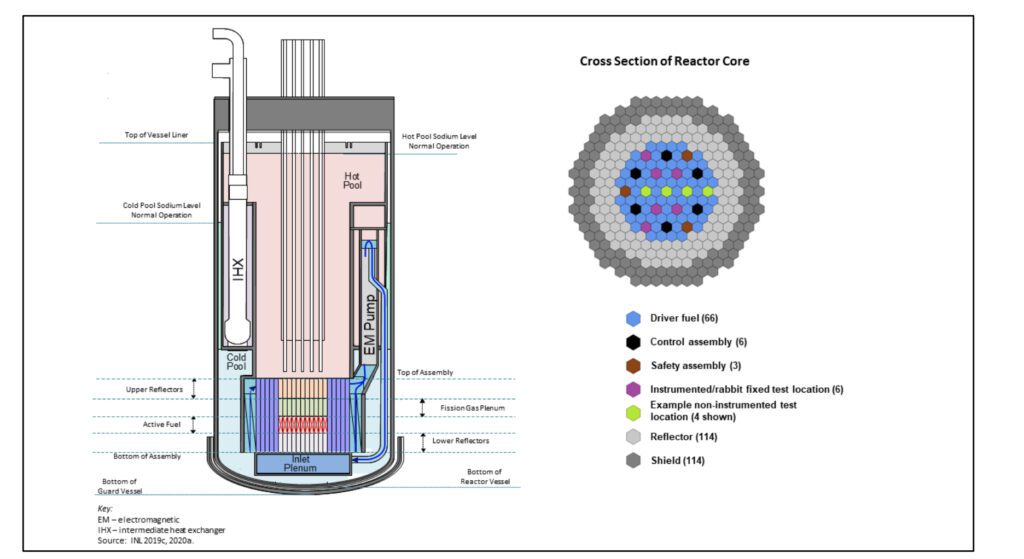DOE’s Decision to Build Versatile Test Reactor Coming Soon

(Updated-May 19, 2022): The Department of Energy (DOE) is poised to decide whether it will build the 300-MWth Versatile Test Reactor (VTR), a fast neutron national user facility that could provide the nuclear industry with a much-needed high-performance testing capability for advanced reactors and existing commercial reactors.
The DOE's Office of Nuclear Energy (DOE-NE) on May 13 released a final environmental impact statement (EIS) for the construction and operation of the sodium-cooled fast-neutron-spectrum test reactor, paving the way for issuance of a record of decision no sooner than 30 days" after the final EIS's planned publication in the Federal Register on May 20.
Funding Will Not Play a Role in the Record of DecisionIf the DOE chooses to build the VTR, the agency's forthcoming record of decision will provide more clarity on project cost, schedule, strategic objective, technology needs, and safeguards. At this stage, the project spearheaded by INL in partnership with five national laboratories (Argonne, Los Alamos, Oak Ridge, Pacific Northwest, and Savannah River) and 18 industry and university partners is estimated to cost $2.6 to $5.8 billion, based on an estimate of $3.6 billion," the DOE confirmed on May 19.
The agency told POWERthatwhile Congress did not allocate funds for the project in its recent Fiscal Year 2022 omnibus spending package in March, funding will be necessary for the project to proceed. However, the availability and timing of funding does not play a role" in the record of decision, it said.
For now, the DOE has requested $45 million for the VTR project in its Fiscal Year 2023 budget request, funds that it expects will be used for component risk reduction activities, including prototyping and testing, nuclear fuel feedstock sourcing and fabrication studies and experimental capabilities development and conceptual design optimization studies."
It said Fiscal Year 2023 activities for the VTR will also be prioritized and coordinated with TerraPower's Natrium project," which is funded in the Infrastructure Investment and Jobs Act under the Advanced Reactor Demonstration Program (ARDP) to take advantage of synergies between the projects." The budget request suggests a memorandum of understanding is in place between the DOE and the Natrium team to allow the VTR to take advantage of Natrium's design commonalities, component development and testing, supply chain development, and construction activities. This synergistic development will allow optimized use of human resources/expertise and testing facilities, reduction in the overall development and testing costs for components that have similar features, and reduction in cost and schedule risk and uncertainty," the DOE said.
The final EIS will ultimately provide the DOE decision-maker" with important information about the environmental impact of alternatives and options for satisfying the VTR's identified purpose and need, the agency added. In addition to environmental information, DOE will consider all relevant factors including public comments, statutory responsibilities, technology needs, safeguards and security, cost, and schedule before issuing a Record of Decision," it said.
INL Is the Preferred SiteThe DOE's three-volume final EIS, prepared in accordance with the National Environmental Policy Act (NEPA) sheds crucial light on the agency's assessed options for the VTR, including potential sites, technology, and scope. These include associated VTR facilities that will be needed to perform post-irradiation evaluations of test materials, manage its spent nuclear fuel (SNF), as well as produce fuel that powers the VTR (driver fuel"), which will be a metallic fuel alloy comprising 70% uranium, 20% plutonium, and 10% zirconium by weight.
Notably, the final EIS echoes a draft VTR EIS released in December 2020, which suggested the DOE narrowed its VTR site options to sites at Idaho National Laboratory (INL), Idaho, and Oak Ridge National Laboratory (ORNL), Tennessee-and picked the INL site as the DOE's preferred alternative."
At INL, the DOE has proposed building and operating the VTR at a 25-acre site next to the national laboratory's Materials and Fuels Complex (MFC), envisioning that existing MFC facilities could be modified and used for post-irradiation examination of test assemblies and conditioning SNF. The EIS suggests the preferred alternative at INL would have an operational life that would extend beyond January 2035, though the DOE would need to explore potential approaches with the state of Idaho about how it manages SNF beyond that date.
The alternative site at ORNL would include construction of the VTR as well as a hot cell building. Both alternatives, however, require building a concrete pad for SNF dry storage, where the used fuel-an estimated 45 SNF assemblies a year-can be stored before being shipped to an offsite storage facility or disposal facility. DOE does not intend to separate, purify, or recover fissile material from VTR driver fuel," it noted.
A key challenge is that fuels for the VTR are currently not commercially available, which means the VTR project must include establishing a fuel fabrication capability. For now, however, the DOE has no preferred options for where it would perform reactor fuel production-including feedstock preparation and driver fuel fabrication for the VTR-suggesting that decision will come as soon as it announces its preferred option. The EIS, however, evaluated VTR fuel production at INL and/or" the Savannah River Site near Aiken, South Carolina, for activities that span preparing feedstock for the fuel, fabricating fuel pins, and assembling the fuel pins into reactor fuel.
| What Is the VTR? On a dedicated website, the DOE describes the Versatile Test Reactor (VTR) as a one-of-a-kind" user facility that will be capable of performing large-scale fast-spectrum neutron-irradiation tests and experiments simply not possible today." If built, the 300-MWth test reactor will comprise four cartridge test loops, a rapid-shuttle test loop-also known as a rabbit"-slots for five standard" experiments, and 50-plus positions for advanced test vehicles, enabling several types of tests simultaneously. These include tests and experiments for molten salt reactors, sodium-cooled fast reactors, lead-cooled fast reactors, gas-cooled fast reactors, structural materials testing for any reactor technology, including the Department of Energy's (DOE's) existing fleet of reactors, as well as for their instrumentation, sensors, and controls. According to the DOE's May 13-issued final EIS, the VTR's design will be based on GE Hitachi (GEH's) sodium-cooled pool-type Power Reactor Innovative Small Module (PRISM), though it also incorporates technologies derived from previous sodium-cooled fast reactors (such as the Experimental Breeder Reactor II and the Fast Flux Test Facility). The VTR's primary heat removal system and safety systems would be similar to the PRISM design, and like PRISM, the VTR would use metallic alloy fuels. However, The PRISM design would require several changes, notably the elimination of electricity production and the accommodation for experimental locations within the core," the DOE said. These changes will cater to the VTR's required high-flux test environment that is designed to accommodate several test and experimental assemblies. Experiments would be placed in some locations normally occupied by driver fuel in the PRISM. Heat generated by the VTR during operation would be dissipated through a heat rejection system consisting of intermediate heat exchangers within the reactor vessel, a secondary sodium-cooling loop, and air-cooled heat exchangers," the DOE says. This system and the Reactor Vessel Auxiliary Cooling System (RVACS) would provide shutdown and emergency cooling. The RVACS would remove decay heat from the sodium pool by transferring the thermal energy through the reactor vessel and guard vessel walls (with convective heat transfer through the argon gas in the annular gap between vessels) to naturally circulating air being drawn down through the inlets of four [100-feet-tall] cooling chimneys, through risers on the exterior of the guard vessel, and up through the outlets of the cooling chimneys."  Conceptual design of the Versatile Test Reactor Facility. Source: DOE Conceptual design of the Versatile Test Reactor Facility. Source: DOEThe core of the VTR itself would comprise 66 driver fuel assemblies-fuel needed to power the reactor and produce the fast neutron flux needed for irradiation of the test assemblies-six control rods, three safety rods, radial reflectors, and radial shield reflectors. The core would be surrounded by rows comprising 114 reflector assemblies, which contain material to reflect neutrons back into the central part of the core. Non-instrumented experiments (containing test specimens) could be placed in multiple locations in the reactor core or in the reflector region, by replacing a driver fuel or reflector assembly (test pins may also be placed within a driver fuel assembly). Instrumented experiments, which would provide real-time information while the reactor is operating, would require a penetration in the reactor cover for the instrumentation stalk and could only be placed in six fixed locations," the DOE noted. One of these six locations can accommodate a rabbit" test apparatus that would allow samples to be inserted and/or removed while the reactor is in operation. The number of instrumented test locations, plus the flexibility in the number and location of non-instrumented tests would strengthen the versatility of the reactor as a test facility," the DOE added.
|
The DOE's issuance of the final EIS for the VTR marks a considerable step for the VTR program, which the DOE-NE began putting together in February 2017 after its Nuclear Energy Advisory Committee recommended immediate action on pre-conceptual design planning to support a new irradiation test reactor to support development and qualification of fuels, materials, and other components for thermal and fast-neutron-based Generation IV advanced reactors. The VTR program became official in 2018 after Congress passed the Nuclear Energy Innovation Capabilities Act (NEICA), and it gained steam with the Consolidated Appropriations Act of 2021.
Though faced with funding limitations, the DOE has marked incremental progress toward the project. Since February 2019, when it approved a mission need for the VTR, the DOE reached Critical Decision 1 in September 2020-paving the way for the engineering design phase to begin. Critical Decision 1 is the second step in the formal process DOE uses to review and manage the design and construction of research infrastructure projects," the DOE said on Friday.
If the DOE makes a final decision to build the project in its forthcoming record of decision, the project will be ready to initiate the engineering design phase in mid-2022, VTR officials have suggested. The DOE has targeted the start of operations for December 2026 (pending funding appropriations by Congress), which is why it selected a mature technology and not one requiring significant testing or experimental efforts to qualify the technology needed to provide the required capabilities and reliability."
Serving a Crucial Research GapHow the DOE decides to proceed will have implications for the burgeoning advanced nuclear industry in the U.S. As Kemal Pasamehmetoglu, executive director for the VTR project, has explained to POWER, the VTR serves a crucial research gap relating to the experimentation, testing, design, evolution, and component qualification for the emerging fleet of advanced nuclear reactors, as well as the existing commercial nuclear fleet. The U.S. currently has thermal neutron spectrum testing facilities, but it has not operated a domestic fast neutron spectrum testing facility in almost 30 years, he said.
Much of the emerging fleet of advanced reactors, however, will be fast reactors," he noted. These include TerraPower and GE Hitachi's Natrium reactor, which is slated for demonstration under the ARDP in Wyoming by 2028. Other prominent examples include General Atomics' Fast Modular Reactor and Energy Multiplier Module, Oklo's Aurora microreactor, TerraPower's Molten Chloride Fast Reactor, and Moltex's Stable Salt Reactor. However, the VTR is designed to be as versatile as possible and to support a range of technologies, including light-water reactors that are in operation today," the DOE notes.
Light water reactors (LWRs), which today characterize the U.S. commercial nuclear fleet, are a type of thermal reactor whose neutrons-sub-atomic particles emitted when an atom is split and used to sustain a chain reaction-are slowed down into a thermal range." But in a fast reactor, the fission neutrons are not slowed down and instead cause fissions by colliding with fissile nuclei at high energy. That aspect is significant because more neutrons are released from fissions caused by high-energy neutrons than from fissions caused by thermal neutrons. Owing to that characteristic, fast neutron reactor systems foster the potential to extract 60 times more energy from uranium compared to existing thermal reactors, and they may contribute to a significant reduction in the burden of radioactive waste.
Today, however, Existing test reactors are focused on the testing of materials, fuels, and components in the thermal neutron spectrum and do not have the ability to support the testing needs for fast reactors," Pasamehmetoglu and co-authors Jordi Roglans-Ribas and Thomas J. O'Connor explained in a recent paper describing the VTR project's mission and requirements. The lack of fast spectrum test facilities has been identified as a gap that negatively impacts the United States' ability to further develop the next generation of nuclear reactors-many of which operate using fast spectrum neutrons-and also negatively impacts the United States' ability to regain global technology leadership in this arena," the paper notes. Furthermore, only limited fast neutron spectrum testing capabilities, with restricted availability, exist outside the United States, limiting the ability of U.S. companies to gain access to the testing that will be needed for the development of their concepts."
If DOE chooses not to build the VTR, a limited set of options may be available. Under a scenario outlined under the final EIS's No Action Alternative," the DOE said it would rely on the limited capabilities of existing facilities, both domestic and foreign" to the extent they are capable and available for testing in the fast-neutron-flux spectrum. Domestic facilities without modification that will likely be used as alternatives under that scenario include the INL Advanced Test Reactor (ATR) and the ORNL High Flux Isotope Reactor (HFIR).
Missing the opportunity to build a versatile test facility now could, however, pose longer-term implications, newly confirmed assistant secretary for Nuclear Energy Dr. Kathryn Huff suggested on Friday. Russia, China, and India already have the critical capability" that the VTR could offer, while the U.S. has let its fast-reactor-based neutron source and testing capabilities lapse for nearly three decades. The government-led innovation initiative is meanwhile growing more vital given U.S. obligations to tackle climate change, she said.
VTR will provide U.S. researchers from industry, academia, and our national laboratories with a critical tool for developing transformational technologies that will expand nuclear energy's contribution to abundant, carbon-free energy," Huff said. VTR's contribution to the fight against climate change begins with our commitment to designing, constructing, and operating the VTR in a way that protects the environment and nearby communities."
-Sonal Patelis a POWER senior associate editor (@sonalcpatel,@POWERmagazine).
Updated (May 19): Adds important details from the DOE on whether funding will play a role in the forthcoming record of decision.
The post DOE's Decision to Build Versatile Test Reactor Coming Soon appeared first on POWER Magazine.
 Versatile Test Reactor and core conceptual designs. Source: DOE
Versatile Test Reactor and core conceptual designs. Source: DOE